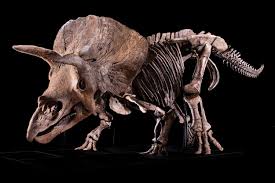Dinocephalosaurus orientalis was a unique species that lived in the wide waters of prehistoric times during the Middle Triassic time period. This ancient reptile transcends simple categorization with its sleek physique built for aquatic functioning and its lengthy neck, which makes up almost half of its body length. Recent discoveries have provided intriguing insights into its way of life, prompting inquiries into its place in the marine ecosystems of its era and providing a window into the evolutionary processes shaping the seas of the Mesozoic.
The Mesozoic Era —which lasted from roughly 252 to 66 million years ago, or 180 million years—is commonly referred to as the “Age of Reptiles.” It is separated into the Jurassic, Cretaceous, and Triassic geological periods. The Earth’s surface and living forms were shaped by major geological, climatic, and evolutionary events that occurred during the Mesozoic Era.
During the Triassic time period, from 252 to 201 million years ago, the supercontinent Pangaea started to divide, resulting in the creation of distinct continents. During this time, the diversity of early reptiles increased, leading to the appearance of dinosaurs, mammals, and pterosaurs—the first flying vertebrates. Large stretches were covered in enormous deserts, and the temperature was usually warm and dry.
“This discovery allows us to see this remarkable long-necked animal in full for the very first time,” said Dr. Nick Fraser, Dr. Nick Fraser, a keeper at Natural Sciences from National Museums Scotland. “It is yet one more example of the weird and wonderful world of the Triassic that continues to baffle paleontologists. We are certain that it will capture imaginations across the globe due to its striking appearance, reminiscent of the long and snake-like, mythical Chinese Dragon.”
The Cretaceous period represents the pinnacle of dinosaur diversity and domination, lasting from around 145 to 66 million years ago. Numerous well-known dinosaur species evolved during this time, including the armored ankylosaurus and horned ceratopsians like Triceratops. However, one of the biggest mass extinctions in Earth’s history, which wiped out around 75% of all species, including the non-avian dinosaurs, also marked the end of the Cretaceous time period. Climate change, asteroid impacts, and volcanic activity are thought to have contributed to this extinction event.
Although the fossil was discovered back in 2003, the fossil was said to be discovered in the Guizhou Province of southern China. There was not much information at disposal to deduce what species the Dinocephalosaurus orientalis was despite the fossil remaining preserved. Thus, multiple professionals came together and collaborated to decipher details.
“This has been an international effort.“ Professor Li Chun, who is concerned with the Institute of Vertebrate Palaeontology and Palaeoanthropology, commented.
“Working together with colleagues from the United States of America, the United Kingdom and Europe, we used newly discovered specimens housed at the Chinese Academy of Sciences to build on our existing knowledge of this animal. Among all of the extraordinary finds we have made in the Triassic of Guizhou Province, Dinocephalosaurus probably stands out as the most remarkable.” He explained.
Despite Dinocephalosaurus orientalis’s distinctive adaptations and ecological relevance, numerous details about it are still unknown. Regarding the fossil’s exact evolutionary lineage, biology of reproduction, and relationships with other marine species of its time period, questions still remain. The possibility of finding further hints about the life and times of this extinct marine reptile holds great promise for furthering our knowledge of Earth’s prehistoric past through ongoing study and excavation of fossil sites across the planet.








